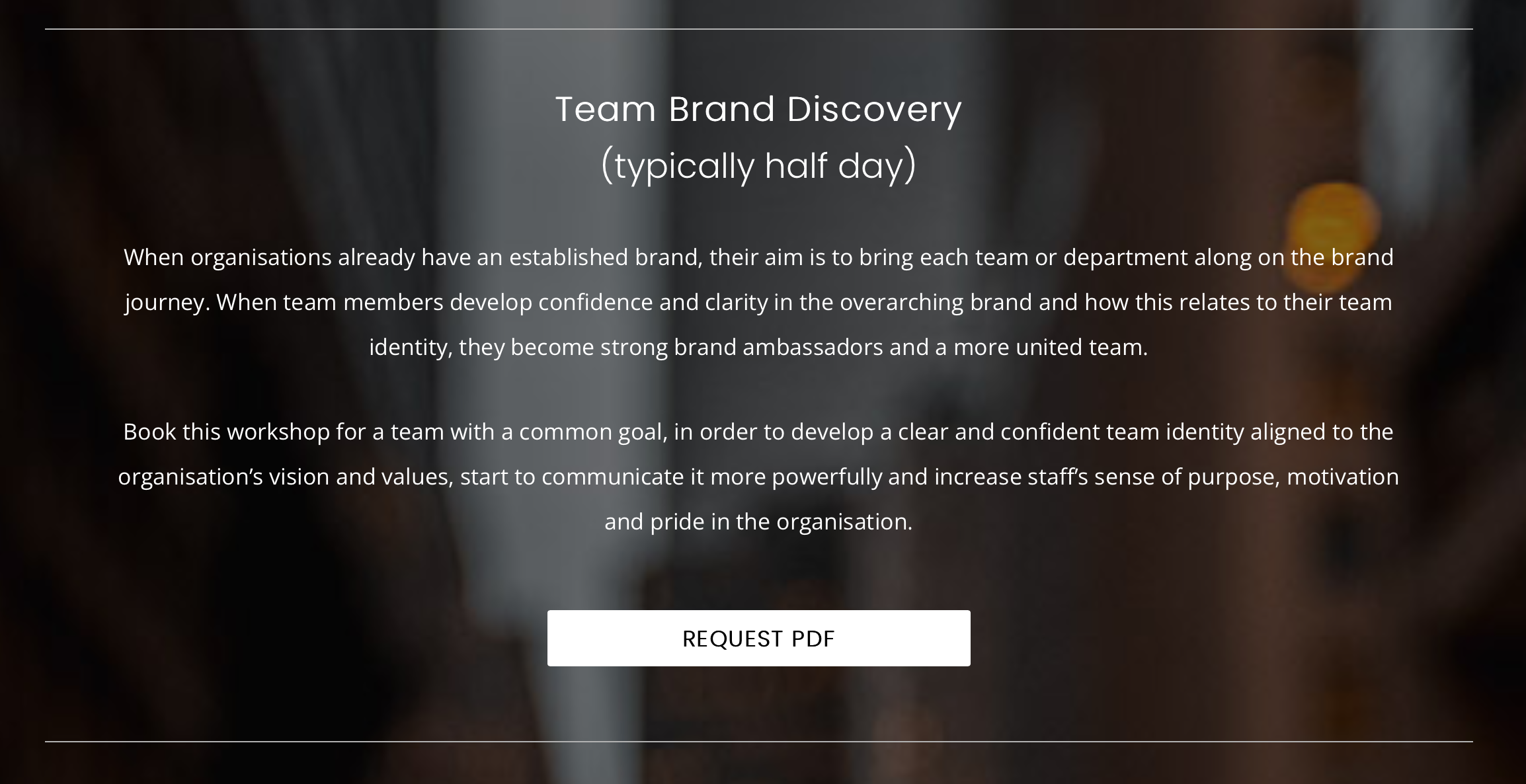How to develop the personal brands of your team
In Part 1 of this series on developing the personal brands of your team members, I described what happens to the team and the business when you work on your team’s personal brands.
Here in Part 2, I will show you that a Lunch ‘n’ Learn on Personal Branding isn’t going to cut it – and what to do instead.
In this series, we will show you:
- Why a strong Personal Branding focus moves teams forward in leaps and bounds
- How to develop the Personal Brands of your team members for impact
- How to get buy-in from leaders and team members on Personal Branding
What can I tell you from running countless Personal Branding presentations over a decade?
Everyone shows up for this topic.
(We love to know how others see us, and how we might influence that.)
Everyone is engaged – leaning forward in their chairs, taking notes, asking questions.
(Even the doubters say it was a fascinating topic and they learned something.)
Everyone knows the next step they want to implement.
(Some people actually do it.)
You usually get all these results in an hour.
You get a little more action in two.
In a half day you can create a plan.
With a follow-up session down the track, you can remember key take-aways and become accountable to achieve at least one action step.
But with an aligned team (or better yet, company) strategy on personal branding… you can shift a Culture to one of personal leadership, accountability, professionalism and pride in results. You can change how audiences see you. You can also, of course, change the results!
By starting at the very personal, individual level – Who am I here? What do I want to achieve? How do I contribute meaningfully? How does this benefit me? – you can transform how people:
See themselves.
See their team.
See the organisation.
Are seen by important others.
How to create a team- or company-wide strategy on personal branding
1. Decide what personal branding really is to you.
There are many definitions of personal branding – decide what it will be at your organisation – and what it won’t be.
For example:
It will be the process for developing your ‘Professional Identity’ – how you want to be seen by specific others in order to achieve meaningful, win-win results.
It won’t be coercion, smoke and mirrors, shiny wrapping, greenwashing/jumping on bandwagons, humble bragging, becoming Instafamous or an obsession with likes on LinkedIn.
2. Bust roadblocks to personal brand progress.
There are some very common roadblocks that stop people working on their personal brands, such as fear of self-promotion, fear of making a mistake, and lack of clarity about the what and how for their particular personal brand.
People have also seen plenty of cringeworthy examples of ‘rockstar’ personal branding that cause them to avoid it all together, despite knowing they need to define themselves as professionals and build awareness of this among networks.
Creating an opportunity to bring personal brand roadblocks to light and break down misconceptions is an important step. With teams, I start with a fun, magazine-style ‘Personal Brand Roadblocks Quiz’ followed by an in-depth collaborative sharing and problem-solving session to help people quickly feel safe moving into personal brand strategy.
3. Like any big move – you need a strategy.
While the details of your actions will differ depending on the organisation, the team, and the individual, a clear overarching strategic approach provides unity and direction. The time-tested approach we use focuses on 4 clear steps.
When building out your strategy, remember you need all 3 levels to your approach: Whole-organisation, Team or Department, and Individual.
4. Lead by example.
Leadership Branding of senior managers and the executive team (even the board!) is an increasingly popular approach to strengthen how leaders are seen internally and externally of the organisation. Clarity and consistency in communicating who they are as individual leaders and as a leadership team, sets the tone for the rest of the organisation to develop strong personal brands.

